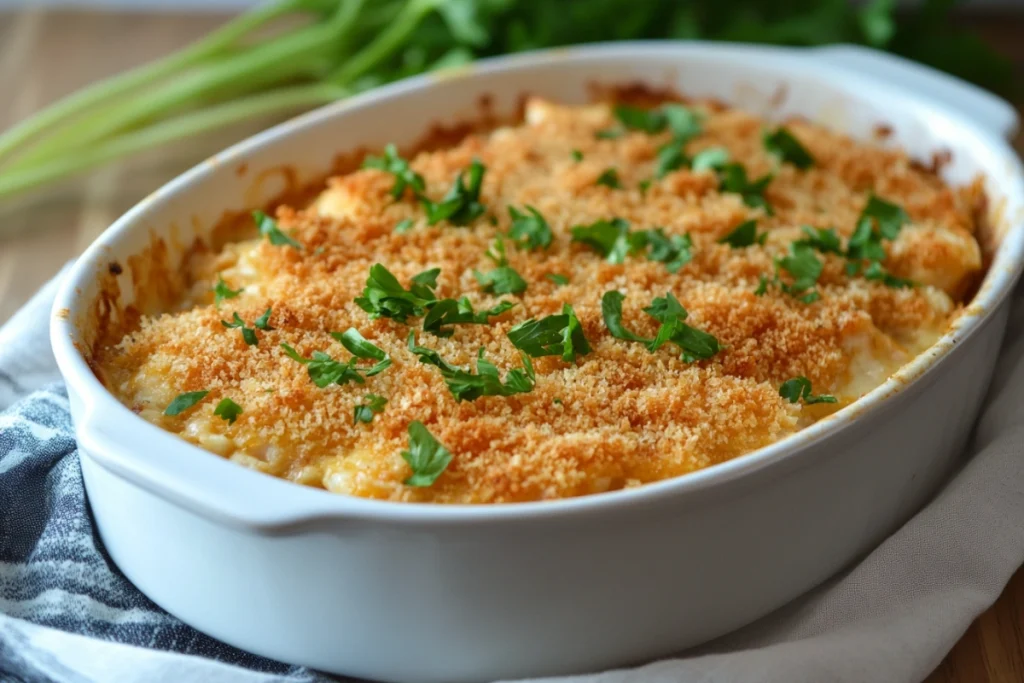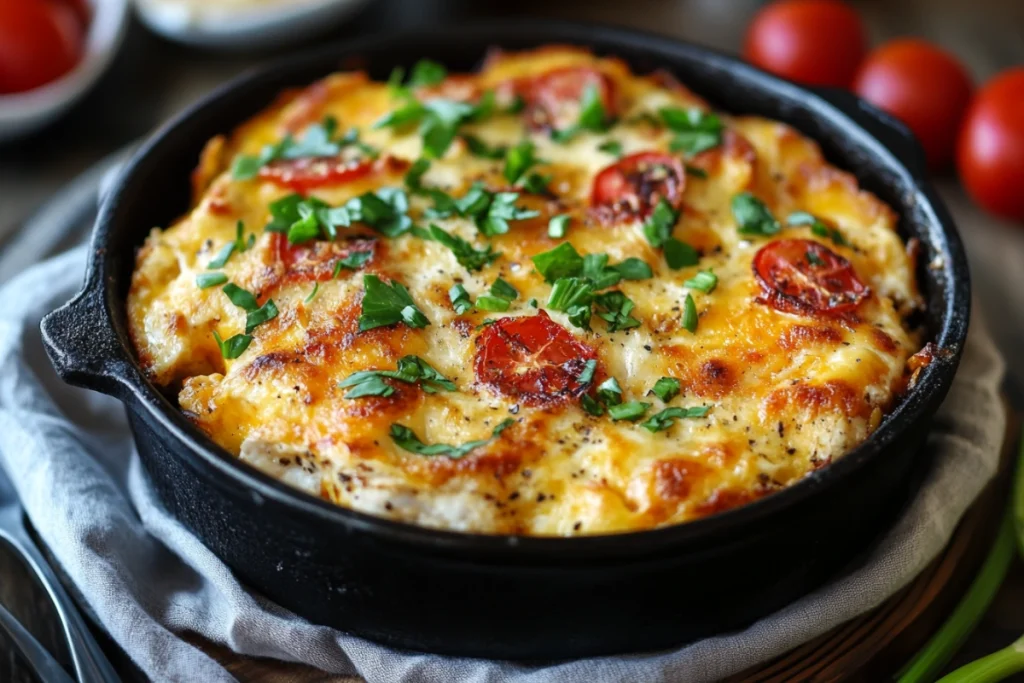When it comes to protein-packed foods, crack chicken recipe stands out as a go-to option for many people. However, not all parts of the chicken offer the same protein levels. If you’re wondering, “What part of chicken has the most protein?”, you’re in the right place! In this article, we’ll explore the various cuts of chicken, diving deep into their nutritional values, with a keen focus on protein content. From the lean chicken breast to the juicy thighs, and even the underrated giblets, each part has its own unique benefits. So, whether you’re meal prepping for a week or just curious about maximizing your protein intake, let’s uncover which part of the chicken reigns supreme when it comes to protein.
Part 1: Understanding Chicken Parts
1.1 Different Cuts of Chicken
Chicken is one of the most versatile and widely consumed meats around the globe. But did you know that the nutritional value can vary significantly depending on the cut? Here’s a quick rundown of the most common chicken cuts you’ll find in your grocery store:
- Chicken Breast: Often hailed as the protein powerhouse, chicken breast is favored for its low-fat content and high protein levels.
- Chicken Thighs: Slightly darker than breasts, thighs have a richer flavor and higher fat content but still offer substantial protein.
- Drumsticks: These meaty pieces sit between the thighs and wings and provide a decent protein punch while being incredibly juicy.
- Wings: While they may not be the highest in protein, wings are loved for their flavor, especially when cooked to perfection.
- Giblets: The heart, liver, and gizzard are nutrient-dense parts often overlooked in favor of the more popular cuts.
Knowing these cuts can help you make informed choices based on your dietary needs. Whether you’re looking to bulk up on protein or simply enjoy a tasty meal, understanding your options is crucial!
1.2 Nutritional Value of Chicken
Now, let’s break down the nutritional profile of chicken. Generally, chicken is a great source of high-quality protein, which is essential for building and repairing tissues. Here’s a quick comparison of the protein content across different parts:
- Chicken Breast: Approx. 31 grams of protein per 100 grams.
- Chicken Thigh: About 25 grams of protein per 100 grams.
- Drumsticks: Roughly 28 grams of protein per 100 grams.
- Wings: Around 23 grams of protein per 100 grams.
These numbers can vary based on cooking methods and whether the skin is removed. It’s important to note that while chicken breast may have the highest protein content, other parts like thighs and drumsticks offer flavorful alternatives with slightly less protein but higher fat content.
For more details on the nutritional values of different chicken parts, check out the USDA Chicken Nutritional Information resource.
Part 2: Chicken Breast – The Protein Powerhouse
2.1 Protein Content
When it comes to high-protein foods, chicken breast is often at the top of the list. In fact, skinless chicken breast packs a whopping 31 grams of protein per 100 grams! This impressive figure makes it the go-to choice for those looking to increase their protein intake, whether you’re an athlete, a fitness enthusiast, or simply trying to maintain a healthy diet. The beauty of chicken breast lies not just in its protein content but also in its versatility.
With such a lean profile, chicken breast is low in fat, making it an excellent choice for anyone following a low-carb or low-fat diet. Compared to other cuts, such as thighs (which contain about 25 grams of protein per 100 grams), chicken breast provides a higher protein density. This means you can get more protein for fewer calories, making it an ideal option for meal prep and weight management.
2.2 Cooking Methods
How you prepare your chicken breast can significantly influence its nutritional value. Common cooking methods like grilling, baking, and sautéing are not only simple but also effective in retaining the protein content. For instance, grilling allows excess fat to drip away while keeping the meat moist and flavorful.
On the other hand, frying can add unnecessary calories and fat, which may detract from its health benefits. If you’re short on time, using an Instant Pot is a fantastic way to cook chicken breast quickly while ensuring it remains tender and juicy. The moisture retention in pressure cooking keeps the chicken from drying out, allowing you to enjoy its rich flavor and protein punch.
You can easily incorporate chicken breast into your meals. From salads and wraps to stir-fries and the crack chicken recipe, there are endless ways to enjoy this nutritious cut. Not to mention, it’s perfect for batch cooking, so you always have a protein source on hand.
For those keen on exploring the nutritional aspects of chicken, check out this helpful resource on the Health Benefits of Protein in Diet to see how chicken breast fits into a balanced diet.

Part 3: Chicken Thighs – A Juicy Alternative
3.1 Protein Content
While chicken breasts often steal the spotlight for their high protein content, chicken thighs are not far behind! Skinless chicken thighs provide about 25 grams of protein per 100 grams, making them a fantastic option for those who prefer a richer, more flavorful piece of meat. The slight drop in protein content compared to breasts is often outweighed by the benefits of their taste and tenderness.
Thighs are darker meat, which typically means they’re juicier and have a bit more fat. This makes them a popular choice for many recipes, particularly in cuisines that favor robust flavors. Their higher fat content can actually help keep the meat moist during cooking, making them less likely to dry out compared to chicken breasts. So, if you’re looking for a satisfying meal, thighs might just hit the spot!
3.2 Flavor and Uses
Chicken thighs are beloved for their deep flavor and versatility in various dishes. They shine in recipes that call for slow cooking or braising, as the fat renders down and enhances the overall taste. You can find them in everything from hearty stews to flavorful curries.
Additionally, thighs can easily be adapted into several popular dishes, including the crack chicken recipe. This dish, which typically combines chicken thighs with cream cheese and seasonings, showcases how delicious and satisfying this cut can be. You can also use thighs in stir-fries, tacos, and grilled skewers, making them a must-have in your weekly meal prep.
If you’re looking to keep it healthy, consider a low-carb crack chicken recipe featuring thighs. The added fat can actually aid in feeling fuller longer, which is beneficial if you’re watching your overall calorie intake.
Part 4: Drumsticks and Wings – Lower Protein Options
4.1 Protein Content
When it comes to chicken, drumsticks and wings are often crowd favorites, especially for casual gatherings and game day snacks. But how do they stack up in terms of protein?
- Drumsticks: These flavorful cuts offer about 28 grams of protein per 100 grams. This is pretty decent, especially considering their rich taste and juiciness. The meat tends to be darker, which contributes to its hearty flavor.
- Wings: While they may not pack as much protein, with approximately 23 grams of protein per 100 grams, wings are beloved for their texture and taste. They’re often slathered in sauces and served with dipping options, making them a fun choice for parties.
Despite having a slightly lower protein content compared to chicken breasts and thighs, drumsticks and wings still provide significant nutritional value. Their unique flavor profiles can complement a variety of dishes, making them a versatile addition to any meal.
4.2 Popular Preparation Styles
The cooking methods for drumsticks and wings can greatly influence their taste and enjoyment. Here are some popular styles:
- Fried: Crispy fried chicken wings are a classic favorite. While frying can add extra calories, it also enhances the flavor, making them irresistibly tasty.
- Baked: For a healthier option, baking drumsticks or wings can be just as delicious. You can season them with spices or a marinade for a satisfying flavor without the added fat.
- Grilled: Grilling is another excellent method that helps retain moisture while imparting a smoky flavor. It’s a great way to enjoy chicken during warmer months.
For a delicious twist, you can prepare these cuts in the crack chicken casserole recipe, where the flavors meld beautifully with cheese and seasonings.
Moreover, consider making a healthy crack chicken recipe using drumsticks or wings for a comforting meal that’s lower in carbs. The added fat in these cuts can help keep you satisfied longer, making them perfect for a family dinner.

Part 5: Chicken Giblets – Nutrient-Dense and Often Overlooked
5.1 What Are Giblets?
Giblets refer to the edible parts of the chicken that typically include the heart, liver, and gizzard. While these parts may not be as popular as chicken breasts or thighs, they are nutrient-dense and provide numerous health benefits. They are often packaged with whole chickens, making them an affordable addition to your meals.
5.2 Protein Content and Nutritional Benefits
Giblets are surprisingly high in protein and packed with essential vitamins and minerals. For example:
- Chicken Liver: This powerhouse offers around 25 grams of protein per 100 grams and is rich in iron, vitamin A, and various B vitamins, including B12. These nutrients are vital for maintaining energy levels and supporting overall health.
- Gizzard: Gizzards contain about 28 grams of protein per 100 grams, and they’re also a good source of zinc, phosphorus, and iron. These nutrients support immune function and help in the development of strong bones.
- Heart: Chicken hearts provide approximately 26 grams of protein per 100 grams and are a great source of coenzyme Q10, which supports heart health and energy production in cells.
Incorporating giblets into your diet can offer a unique flavor and texture that enhances your dishes while providing essential nutrients. They can be used in various recipes, including gravies, soups, and stews. Additionally, they make a flavorful addition to a crack chicken casserole recipe, giving it an extra depth of flavor.
5.3 Cooking Tips
When preparing giblets, it’s best to cook them low and slow to tenderize the meat. You can sauté, boil, or roast them, depending on your recipe. Giblets can also be finely chopped and mixed into ground meat for an added protein boost.
For those looking to maximize their nutrition, consider using giblets in a healthy crack chicken recipe that emphasizes wholesome ingredients without compromising on flavor. Their rich taste can elevate a dish while keeping it nutritious.
For a deeper understanding of the nutritional benefits of various animal products, you can explore this informative resource on Nutritional Aspects of Offal, which covers the health benefits of organ meats, including chicken giblets.
Part 6: FAQs about Chicken Parts and Protein Content
6.1 What Part of the Chicken Has the Most Protein?
When it comes to protein content, chicken breast takes the crown, offering approximately 31 grams of protein per 100 grams. This makes it an ideal choice for those looking to boost their protein intake. Following closely are chicken thighs, which provide about 25 grams of protein per 100 grams. Although other parts, like drumsticks and wings, contain decent amounts of protein, they are lower than that of breasts and thighs.
6.2 Are Chicken Thighs Healthier Than Breasts?
While chicken thighs have a higher fat content, they also contain more flavor and juiciness compared to chicken breasts. Whether they’re “healthier” can depend on your dietary goals. If you’re focusing on lower fat intake, chicken breasts might be the better option. However, if you’re looking for richer taste and satiety, thighs can be a great choice. Both cuts have their own nutritional benefits, so the best option may vary based on personal preference.
6.3 Can You Eat Chicken Giblets?
Yes, chicken giblets are safe to eat and offer a range of health benefits. They are nutrient-dense, high in protein, and rich in vitamins and minerals. Giblets can be used in various recipes, like soups, gravies, or even mixed into ground meat for added flavor and nutrition. Just ensure that they are cooked properly to ensure safety and taste.
6.4 How Do Cooking Methods Affect Protein Content?
Cooking methods can slightly alter the protein content of chicken, but generally, chicken retains most of its protein, regardless of how it’s cooked. For instance, grilling, baking, or sautéing chicken helps keep its nutritional profile intact. However, frying can add extra calories and fat, which may affect overall health benefitsMeat Healthier Than White Meat?
Dark meat, like chicken thighs and drumsticks, tends to have a higher fat content compared to white meat, like chicken breasts. While it’s richer in flavor, the choice between dark and white meat often comes down to personal preference and dietary goals. For those looking to increase flavor and satiety, dark meat may be preferable, while those focusing on lower fat might choose white meat .
For more detailng chicken and nutrition, you can refer to resources like USDA’s FoodData Central for comprehensive nutritional data on various chicken parts.
Part 7: Conclusion – Choosing the Right Chicken Cut for Protein
As we’ve explored throughout this article, different parts of the chicken offer various benefits when it comes to protein content. Each cut brings its unique flavor and nutritional profile, catering to a wide range of dietary preferences and culinary needs.
- Chicken Breast remains the protein powerhouse, boasting about 31 grams of protein per 100 grams. It’s a staple for health-conscious eaters, ideal for a variety of dishes, from salads to casseroles.
- Chicken Thighs provide about 25 grams of protein per 100 grams and are favored for their rich flavor and juiciness, making them perfect for slow-cooked meals or hearty recipes like crack chicken casserole.
- Drumsticks and Wings, while slightly lower in protein, offer about 28 grams and 23 grams of protein per 100 grams, respectively. They’re perfect for gatherings and casual dining, often celebrated for their taste and texture.
- Giblets, often overlooked, pack a punch in both flavor and nutrition, with high protein content and essential vitamins, making them a worthwhile addition to your meals.
Choosing the right cut depends on your dietary goals and personal preferences. Whether you prefer the lean protein of breasts or the richer taste of thighs and giblets, there’s a chicken option to suit every palate.
For those interested in learning more about the health benefits of chicken, nutritionists recommend utilizing resources like USDA’s FoodData Central to better understand the nutritional value of various chicken parts and how they fit into a balanced diet.
Incorporating chicken into your meals not only provides a delicious flavor but also supports a healthy lifestyle, ensuring you meet your protein needs while enjoying a variety of tasty dishes.

